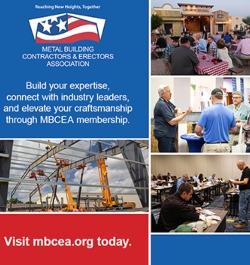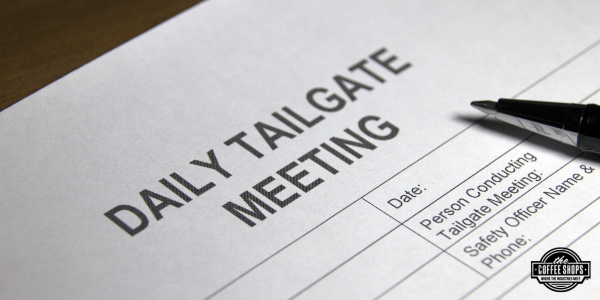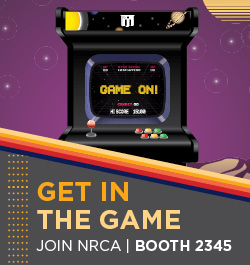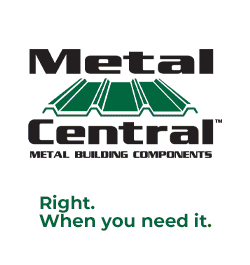UP TO THE MINUTE
Adding an Employee Recognition Program For Safety

By John Kenney, Cotney Consulting Group.
In this article, we will look at the structure of disciplinary policy and then discuss implementing a successful employee recognition program to improve project safety performance.
Typically, the two things that come to mind about employee recognition are progressive discipline and incentives. The construction industry has used a progressive disciplinary procedure as a safety performance improvement tool for years, which will work well for roofing contractors. Employees who violate any applicable federal, state, or local safety regulations, company policies, and owner requirements will be subjected to progressive discipline. The resulting consequences range from a verbal warning to immediate termination from the company. Within traditional company discipline policies, the word "discipline" is often interpreted in the employee's mind as a punishment for violating a safety rule.
Typically a three-step progressive disciplinary process is used for all employees violating safety rules and regulations of company policies:
- First violation = Verbal warnings. Usually, a verbal warning involves an informal discussion between a supervisor and the employee about unsafe behavior. The conference provides a teaching opportunity and a good chance for the employee to correct their behavior. The employee typically assures the supervisor that it will not happen again. A verbal warning must be documented in the file.
- Second violation = Up to three-day suspension from the company, and the employee receives a written warning issuing a written safety violation notice to the employee with specifics about the unacceptable behavior or safety policies violated. It may also include the employee's direct supervisor receiving a verbal warning. Some companies set some timelines, such as a second violation within six months of the first violation will result in an automatic three-day suspension without pay.
- Third violation = Termination of employment. This also involves issuing a written safety violation notice to the employee with specifics about unacceptable behavior or safety policy violations. It may also include the employee's direct supervisor receiving a three-day suspension.
- Zero tolerance. Zero tolerance items involve unsafe behavior or condition that could lead to serious injuries, death, property damage, or significant business interruptions. Most companies have a list of zero-tolerance violations where the employee is terminated immediately from the project and/or the company.
Examples of zero-tolerance items in roofing can include but are not limited to:
- Fall Protection
- Employees willfully create a hazardous condition
- Employees purposely causing an injury to another person
- Employees failing to report incidents
- Possession of firearms, unless allowed by the jurisdictional authority
- Threats
- Operating equipment without proper authority or qualifications
- Failure to use the appropriate sanitary facilities
Other items to consider as part of a progressive disciplinary policy are:
- The company should create a written progressive disciplinary policy. A poorly written policy can lead to confusion and potential lawsuits for violating employee rights. It would be best if you allowed some flexibility in the policy so employers can have discretion in enforcing it.
- Train all employees on the policy during onboarding orientation. Include the policy in the employee handbook or similar documents since it makes it easier for employees and supervisors to refer to them.
- Train all supervisors in the means and methods to enforce the policy. The supervisor training should include ways to confront the violator, how to be consistent in the judgment, how to retrain/teach them, and documentation procedures.
- Disciplinary action should take place immediately after all the facts are known.
- Document all disciplinary measures.
- Retrain all employees receiving disciplinary action.
- Maintain the employee's information anonymously and discuss the violation in the monthly or weekly safety meeting.
Even though a progressive disciplinary program is a practical starting point, you need a paradigm culture shift to achieve a genuinely influential safety culture. The shift required comes with using a synonym definition from discipline to teaching.
Some best practice examples listed below will help make the process more effective.
- Make sure the teaching opportunity occurs soon after the incident. Waiting until the next day lessons the impact of the teaching moment, and employees may not learn from their actions.
- Ensure the teaching opportunity is certain. The employee needs to understand what specific behavior resulted in the consequence. Discipline is ineffective for poor attitudes or lack of common sense.
- Ensure the teaching opportunity is significant – Consequences do not change behaviors unless the employee perceives them as necessary.
- Ensure the teaching opportunity is sincere – Appropriate motives for administering discipline and awarding positive recognition are essential to the effectiveness of a consequence. Be fair to all employees and be consistent. You should not reprimand one person and ignore others for an action done by many. On the same note, you should not discipline someone for a violation on Monday and walk past the same violation on Friday.
Again, improving the recognition program in the workplace is one of the easiest ways to reduce losses. The process is simple, especially once you've made recognition a habit.
Employee recognition
Let's look at the other end of the spectrum, a positive recognition policy. It is simple. When workers are made aware of their expectations and spontaneously recognized positively by management, there is a direct correlation between reductions in a traditional discipline program and an overall reduction in injury rates. Shifting the conventional thought process and implementing employee recognition becomes a critical component to the point where discipline may become nearly unnecessary, as it is known today. After all, isn't that the main goal in the first place?
Companies have reported that changing their interactions with people from focusing on the good rather than the bad has reduced unsafe behaviors. Reducing unsafe behaviors will improve productivity, profit and people's attitudes.
Reducing the need for discipline and giving the incentive to perform work safely will reduce the opportunity for injury.
I am not suggesting that teaching opportunities will never exist, but creating a culture recognizing employees in a way that fosters willingness on the employee's part toward positive recognition reduces the likelihood that discipline will be needed.
People are motivated in different ways. Some by internal rewards such as a sense of accomplishment, helping others, or doing a good job, and others through external rewards such as monetary recognition.
Below are some examples of how rewarding can be easy and effective:
- Name posted on bulletin board, written up in the newsletter
- "Safety Hero" certificate for complying
- An entry into the employee's file- positive safety performance appraisal
- Safety bucks. When you catch someone doing something right
- Formal recognition by the owner
- And don't forget the simple "Thank you" as you walk past!"
Roofing companies should also consider the following best practices when developing their recognition/incentive programs. Never tie your recognition to lagging indicators such as the number of days without a recordable or lost time injury. This could lead to major incidents in the future. It can lead to underreporting and could lead to many accidents going uninvestigated. Provide an incentive or recognize employees using leading indicators such as:
- Crew recognition of the good development and implementation of their pre-task plan.
- Crew recognition for their excellent housekeeping practices was identified using management inspections.
- Crew recognition for "zero" unsafe acts or conditions associated with the crew.
- Individual recognition for developing and implementing innovative safety practices or procedures.
As with discipline, recognize your employees promptly. Recognize employees with an appreciation lunch rather than tying lunches to milestones such as days without injuries, which can lead to underreporting.
Combining these two schools of thought, recognition, and discipline, into a Best Management Practice can be described as a "Carrots or Stick" scenario. The expression "carrot or stick" refers to a system of recognition and discipline that will result in desired behaviors. A "carrot" approach incentivizes good work with rewards, while a "stick" approach uses discipline to push people towards goals.
In the traditional sense, discipline is used if the incentive no longer serves as a motivator to perform. However, as we learned in this article in the paradigm shift model, discipline is now used as a teaching and learning opportunity.
Learn more about Cotney Consulting Group in their directory or visit www.cotneyconsulting.com.
About John Kenney
John Kenney is the Chief Executive Officer at Cotney Consulting Group. Prior to starting Cotney, John had 45 years of experience in the construction industry. John began his career by working as a roofing apprentice at a family business in the Northeast. Because of his skill and hard work, he progressed from roofing laborer to foreman, estimator, chief estimator, Vice President, and Chief Operating Officer with his various companies. John has worked for multiple Top 100 Roofing Contractors and is intimately familiar with all aspects of roofing production, estimating, and operations. In his last role, John was responsible for the daily operations and performance of a large commercial roofing contractor. During his tenure, John ran business units associated with delivering excellent workmanship and unparalleled customer service while ensuring healthy net profits for his company.




















Comments
Leave a Reply
Have an account? Login to leave a comment!
Sign In